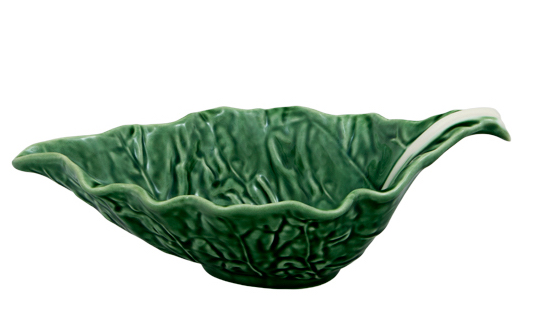Making gravy is a game of choose your own adventure. Pick a stock, pick a fat—pan drippings, pork fat (from the likes of bacon, sausage, or country ham), and butter all work—and select a flavor flair, from booze to herbs. Then put it all together without burning it. It can be one of the simplest Thanksgiving elements to nail…or mess up (hello, scorched roux). So we’re giving you a peek into the playbook of some of the South’s top gravy gurus. Tap their knowledge for your best-dressed bird yet.
Step 1: Take Stock of Your Stock
Layer in your flavor, says Cassidee Dabney, the executive chef at the Barn at Blackberry Farm in Walland, Tennessee. “The stock needs to be running on all cylinders. If you’re making stock for the first time, here’s a quick cheat: Dice a sweet onion in large pieces and sweat in a big pot. Add a few dehydrated mushrooms, bay leaves, and garlic and the carcass of a rotisserie chicken. Cover with store-bought low-salt chicken broth and simmer for an hour. Strain and cool.” On Thanksgiving, you can add the bird’s neck, gizzards, and heart to this base stock. “I skip the liver because it can add a metallic taste not everyone likes.”
Consider a vegetable stock, suggests Howard Pickrel, the executive chef at Early Girl Eatery in Asheville, North Carolina. “We always keep a vegetable stock on hand by saving all of our vegetable and herb scraps. We then cover with water and cook down low and slow. This stock will lend itself to most proteins”
Manage the salinity, says Eric Dreyer, the executive chef at Ellie’s Restaurant & Lounge in Dallas, Texas. “Go for a rich chicken or turkey stock, unseasoned so you can control the saltiness of the gravy. The poultry stock is more palatable and can take on other flavors without overpowering. I like to roast my bones and then add with aromatics/mire poix (herbs, peppercorns, celery, carrot, onion) to an already made stock for more richness.”
Step 2: Make the Roux (without Burning It)
Begin with simple proportions, advises Dabney. “Start with one-part fat to one-part flour to one cup stock (for example, 1 tablespoon of fat to 1 tablespoon of flour to 1 cup of stock).”
If you’re a gravy rookie, consider scaling back on the flour, says Pickrel. “Watch that you are not putting too much flour in and then not cooking it out. This gives you a pasty, raw flavor. If you err on the side of slightly more oil [or fat]—you will find this called a slack roux—it is a lot more forgiving and is easier to get the flour flavor cooked out.”
Don’t rush it, reminds Dreyer. “Watch the heat—slow and low will keep you from burning your roux.”
Prevent lumps. Adding hot liquid to a hot roux will leave you with clumps. “You will want to make sure you are adding a cold liquid to a hot roux,” says Pickrel. “Add your strained stock”—straining prevents particles from the cooking process from entering your gravy—in stages. Divide your stock into three equal parts; add the first part and whisk till smooth. Repeat this process two more times.”
And use the right tools, suggests Hunter Evans, the executive chef at Elvie’s in Jackson, Mississippi. “When you first start adding the flour, use a whisk, and add a little at a time. When it’s all added, get a flat wooden spoon to get the flour out of the edges of the pan that a whisk can’t get. Stir continuously and manage the heat. If it’s too hot, it is going to cook uneven and burn in some spots.”
Step 3: Nail the Flavor
Add in tastes of the season. “Depending on what you are pairing the gravy with, enhance it with herbs or finish with a little apple brandy,” Dreyer says. “Sage is a nice fall herb to compliment your gravy.”
Snip from the garden. “Herbs,” Evans says. “Lots of thyme. If you have some fresh rosemary in the garden, you better add it.”
Deglaze with your booze of choice, suggests Pickrel, who uses fat rendered from pork in his gravy. As he sears the meat, “I will use alcohol to deglaze the pan. If I am cooking a protein that is harder to have the flavor penetrate, then I will add fresh herbs to the sauce.”
Go with your gut, says Erik Niel, executive chef and co-owner of Easy Bistro & Bar in Chattanooga, Tennessee. “I’m bad at making things the same way every time. Let your creative flag fly here.”
Time to Troubleshoot!
Uh oh! It’s not thick enough!
Make a cornstarch slurry, says Dreyer. “While gravy is simmering, whisk the slurry (1 tablespoon of cornstarch mixed with 1 tablespoon of water) into the gravy. Cook out for 5 minutes and check thickness, add more if desired.”
Uh oh! It’s too thick!
Add stock a bit at a time, says Pickrel. “Never use just water as that will dilute the gravy.”
Uh oh! It’s too salty!
Uh oh is right, says Niel. “First, panic! Then make another batch. Too salty is hard to fix without losing the flavor.”
Uh oh! I burned the roux!
There’s only one solution, according Niel. “Once it’s burnt, it’s burnt. Start over! Just go slow, use low heat, and stir constantly. This isn’t brain surgery but it’s pretty damn important to the whole gravy process.”
Serve It Up in a Showstopping Gravy Boat

You can pick a beauty that won’t break the bank…
Naturalistic designs by the late-nineteenth-century Portuguese ceramist Raphael Bordallo Pinheiro remain in production today, including his take on a gravy boat in the form of a cabbage leaf. ($28; us.bordallopinheiro.com)

… Or a vessel to be handed down to the next generation of gravy gurus…
A twenty-two-karat-gold handle and a contemporary, hand-painted pattern render this porcelain stunner by R. Haviland & C. Parlon as much a work of art as a functional vessel. ($810; mottahedeh.com)
…Or any of the other stunners highlighted in Garden & Gun’s October/November 2019 issue.








